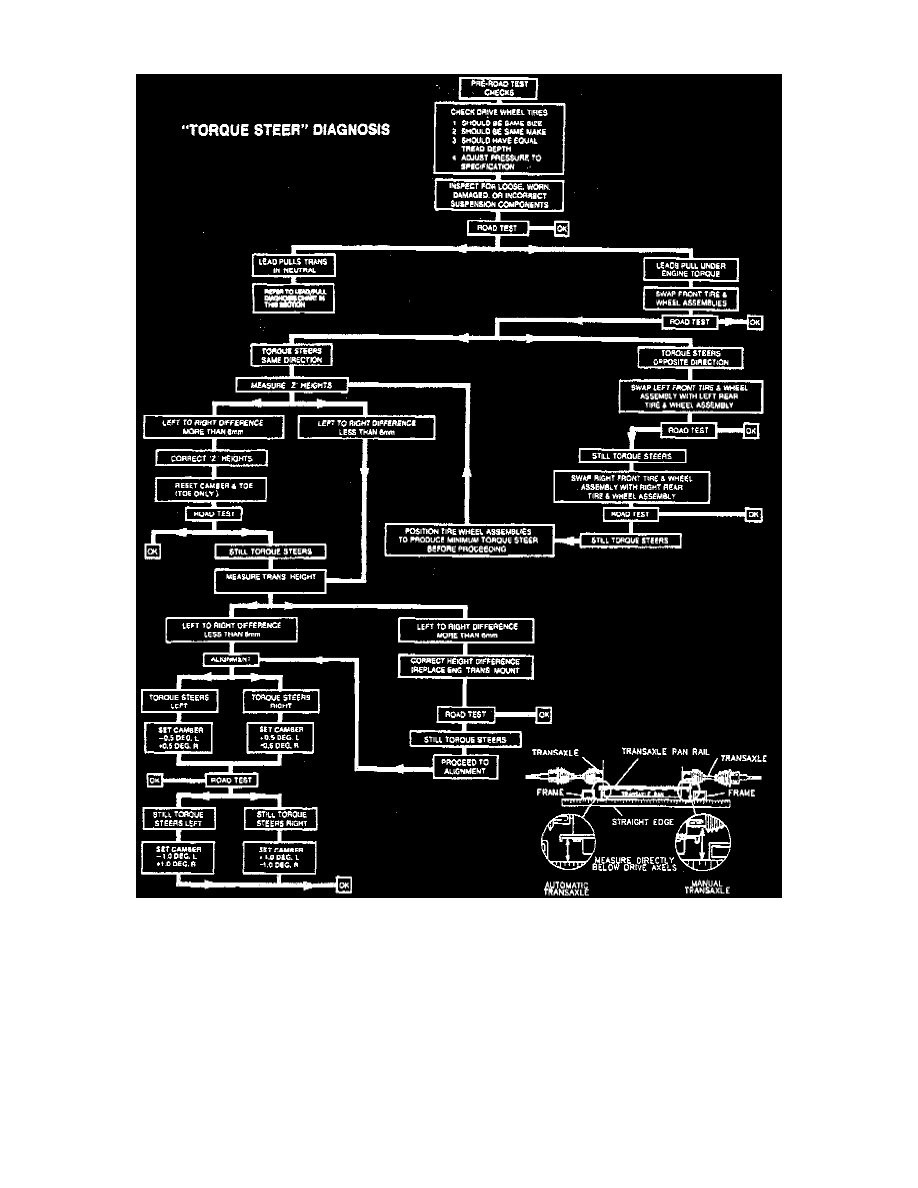Malibu V6-191 3.1L VIN M SFI (1997)

Alignment: Testing and Inspection
Some degree of torque steer to the right may normally be experienced during heavy throttle application on some front-wheel-drive vehicles that do not
have equal length drive axles. This is due to the right drive axle being longer than the left axle and associated difference in axle angle. Vehicles with
intermediate shaft assemblies have almost equal length axles.
A difference in axle length results in more torque toe-in effect to the left front wheel. This condition can be noticed when accelerating from a standing
start or at lower speeds. A simple measurement to determine the degree of torque steer is to place a small piece of tape at the top center of the steering
wheel. Drive the vehicle and note the inches of steering wheel deflection required to steer the vehicle straight under heavy acceleration. A comparison
of like vehicles will then determine if a particular vehicle has a greater than normal degree of torque steer. The following factors may cause torque
steer to be more apparent on a particular vehicle:
^
Large difference in right and left front tire pressure.
^
A slightly smaller diameter tire on the right front will increase a right torque lead. Inspect front tires for difference in brand, construction, or size.
If the tires appear similar, change the front tires side to side and re-test the vehicle. Tire and wheel assemblies have the most significant effect on
torque steer correction.
